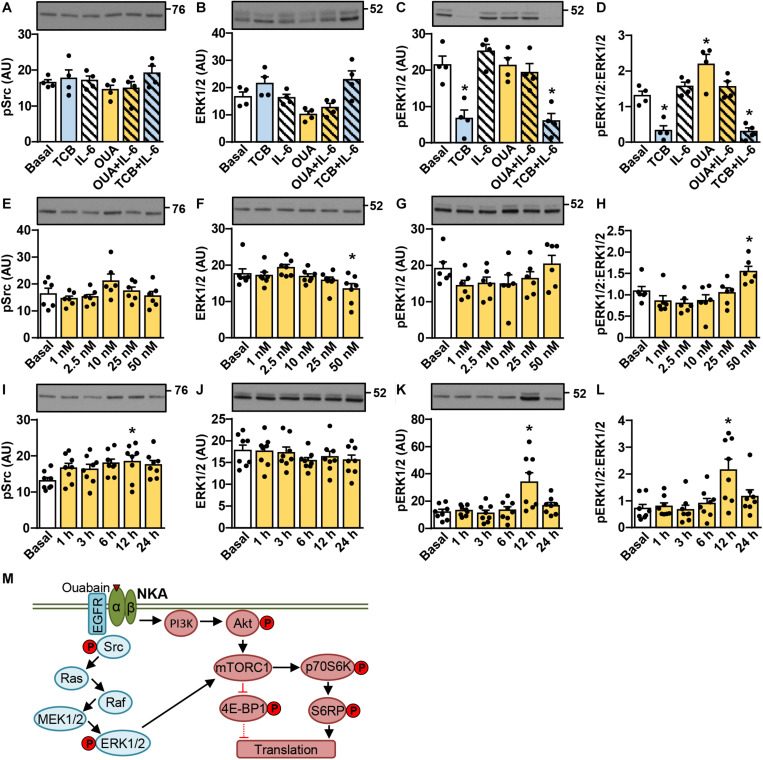FIGURE 2.
Ouabain stimulates activation of the ERK1/2 pathway in cultured human myotubes in a time- and concentration-dependent manner. (A–D) Human myotubes were treated with or without 50 nM ouabain (OUA) in Advanced MEM with 2% FBS for 20 h and in serum-free Advanced MEM for 4 h. Cells were treated with tocilizumab (100 μg/ml, TCB) during the last 4 h and with interleukin-6 (50 ng/ml, IL-6) during the last 15 min. (E–L) Human myotubes were treated in serum-free Advanced MEM with different concentrations of OUA for 24 h (E–H) or with 50 nM OUA for 1–24 h (I–L). (A,E,I) phospho-Src (Tyr527), (B,F,J) the total ERK1/2 and (C,G,K) phospho-ERK1/2 (Thr202/Tyr204) were measured by immunoblotting. Graphs in panels (D,H,L) show the phospho-ERK1/2:ERK1/2 ratio. Results are means with SEM (n = 4–8). *p < 0.05 vs. Basal. (M) Schematic overview of ouabain signaling via the Src-ERK1/2 pathway and the phosphatidylinositol 3-kinase (PI3K)/Akt/mTOR pathway. ERK1/2 is a known upstream regulator of the mTOR complex 1 (mTORC1), indicating crosstalk between the two pathways. Phosphoproteins that were assessed in this study are indicated by P.

